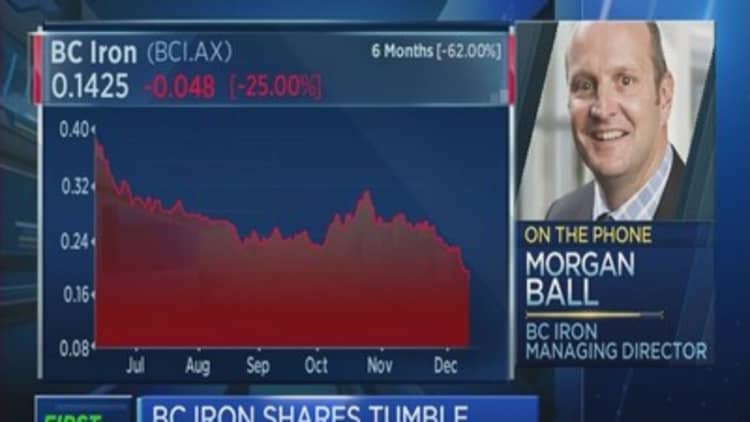Gold fell 2 percent in its biggest drop in five months on Thursday, flirting with a 2010 low as the dollar surged after the Federal Reserve increased U.S. interest rates for the first time in nearly a decade and hinted at more increases in 2016.
The U.S. central bank raised the range of its benchmark interest rate by a quarter of a percentage point as expected, on Wednesday.
The Fed's move initially sent the dollar slightly lower and gold prices held their gains. On Thursday, however, the greenback rallied to a two-week high against a basket of leading currencies on the view that the central bank's move would make U.S. assets more attractive.

"Yesterday there wasn't much of a currency move and today there was a fairly sharp one," said Bart Melek, head of commodity strategy for TD Securities in Toronto.
"This is prompting people to move out. It becomes more expensive in (terms of) cost of carry because of the dollar and there's an element of expected interest rates down the road."
A stronger U.S. currency makes gold more expensive for foreign holders.
dipped as much as 2.4 percent to a session low of $1,047.25 an ounce, just $1.40 above a near-six-year low hit earlier this month. It was last down 1.9 percent at $1,051.80.
U.S. February futures settled down 2.5 percent at $1,049.60 an ounce.
"The hints of further rate hikes moved the dollar because the market had priced in two to three more rate hikes in 2016," Citi strategist David Wilson said.
Gold has slumped 11 percent this year, largely on uncertainty around the timing of the rise and on fears that higher rates would hit demand for the non-interest-paying metal.
Further trouble for gold could come from continued weakness in other commodities, notably oil, which fell 5 percent on Wednesday on oversupply worries and continued to ease on Thursday, mostly on dollar strength.
Gold is usually seen as an hedge against oil-led inflation and a lack of inflationary expectations removes another reason for investors to gain exposure to the metal.
"Everything that the Fed said yesterday suggests that money looking for a home, looking for yield, is going to continue to prefer equities," ICBC Standard Bank analyst Tom Kendall said.
Other precious metals also took a hit from a stronger dollar. Palladium fell as much as 3.6 percent to a session low of $548.25 an ounce, while silver dropped 3.1 percent to $13.63 an ounce. Platinum dropped 4.1 percent to a session low of $837 an ounce.


